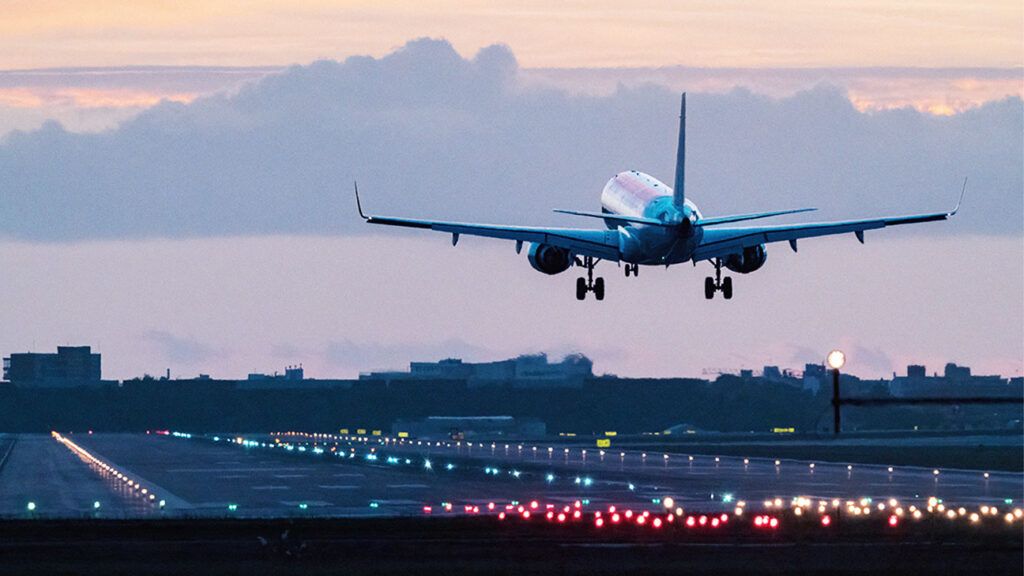Aerophobia, or fear of flying, can cause severe anxiety and affect a person’s quality of life. Exposure therapy is a standard treatment that may help.
Aerophobia, or aviophobia, is a fear of flying on a plane or another form of air transport. Typically, health experts describe a phobia as an irrational fear response that is disproportionate to the danger it represents. Strategies to help a person overcome aerophobia can include a combination of therapy and medications.

Aerophobia is a fear of flying on a plane or other air transport, such as a helicopter. The Diagnostic and Statistical Manual of Mental Disorders, 5th edition, text revision (DSM-5-TR) classifies this fear as a specific phobia. People sometimes also refer to the fear of flying as aviophobia.
According to the
Up to
Aerophobia can cause distress and affect someone’s quality of life. It can limit a person’s opportunities to travel for work or leisure or can cause severe anxiety when they cannot avoid flying.
Behavioral therapy is one of the
Therapists teach people techniques for coping with the anxiety related to their phobia, such as breathing control and relaxation. For example, cognitive behavioral therapy (CBT) for aerophobia reinforces the realization that flying is safe.
The authors of a
The results of a small 2021 study with 39 participants suggest that virtual reality exposure therapy with CBT may be more effective for aerophobia than CBT alone. In virtual reality therapy, a therapist uses a computer screen to simulate the flying experience.
Doctors
However, some of these drugs may not be suitable to take during a flight because of their sedative side effects. They may impair a person’s ability to follow instructions and may increase the risk of blood clots.
Scientists
The authors of a
They explain that aerophobia develops when someone fails to disconfirm perceived threats and feared outcomes. The failure to disconfirm happens for the following reasons:
- Focusing attention on internal sensations related to perceived threats creates hypervigilance and causes the person to miss cues that indicate safety.
- Cognitive biases cause the person to overestimate the chances of negative outcomes.
- The person may have preexisting beliefs about being in control of a situation and being able to cope with adversity.
- If the feared outcome does not occur, the person may believe that behavioral strategies such as escape, avoidance, and suppression of thoughts prevented it — but, in reality, the outcome did not occur because it was unlikely that it would.
- Recalling past experiences and imagining future stressful events associated with flying will confirm the threat and worsen anxiety.
The review authors state that people who have aerophobia may have other phobias, such as claustrophobia (fear of confined spaces) or acrophobia (fear of heights). They may also have other anxiety disorders or thought processes that contribute to this phobia. For example, while on plane, they may experience anxiety stemming from a loss of control.
People with aerophobia
- in anticipation of flying, such as when booking a vacation
- while waiting in the airport and boarding the plane
- during the flight
- during takeoff and landing
The most common signs and symptoms that people experience with specific phobias include:
- fear or anxiety that is disproportionate to the actual danger
- difficulty breathing or tightness in the chest
- a racing heart
- dizziness or fainting
- nausea
If someone has a panic attack associated with flying, they may experience the following
- trembling or shaking
- sweating, chills, or hot flushes
- heart palpitations
- feelings of unreality or detachment
- numbness or tingling sensations
- feelings of choking
- fear of losing control or losing their mind
People with aerophobia may avoid flying completely or feel extremely anxious if they need to fly. They may inconvenience themselves by arranging alternative types of transport that take longer or are more expensive. They may not be able to fulfill their desires to see other parts of the world, which may also limit their interaction with family members or friends.
A specific phobia such as aerophobia
- Flying provokes immediate fear or anxiety.
- A person avoids flying for 6 months or more.
- Aerophobia affects a person’s work or social life.
- A person experiences anxiety that is not due to another anxiety disorder.
The Anxiety and Depression Association of America suggests the following tips for managing aerophobia:
- Tell other travelers what they can do to help.
- Value each flight as exposure therapy.
- Learn how airplanes handle turbulence and remind oneself that they are safe.
- Understand that anxiety tricks a person into feeling unsafe, and outsmart it by embracing any discomfort.
- Know that anticipatory anxiety is often more intense than the anxiety of being on the plane itself.
- Remind oneself that feeling anxious does not mean the situation is truly dangerous.
A person can enlist the help of a therapist or doctor to help them overcome aerophobia. These health professionals may suggest CBT, exposure therapy, or other treatments.
Read on to learn more about managing aerophobia.
Aerophobia is a specific phobia of flying. It can cause severe anxiety symptoms and affect a person’s quality of life. Treatment typically involves behavioral therapy such as exposure therapy or CBT. In some cases, a doctor may also recommend anti-anxiety medications.


